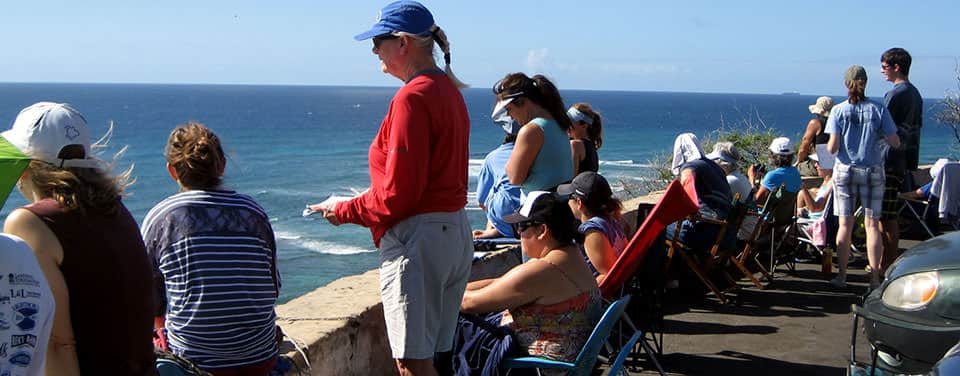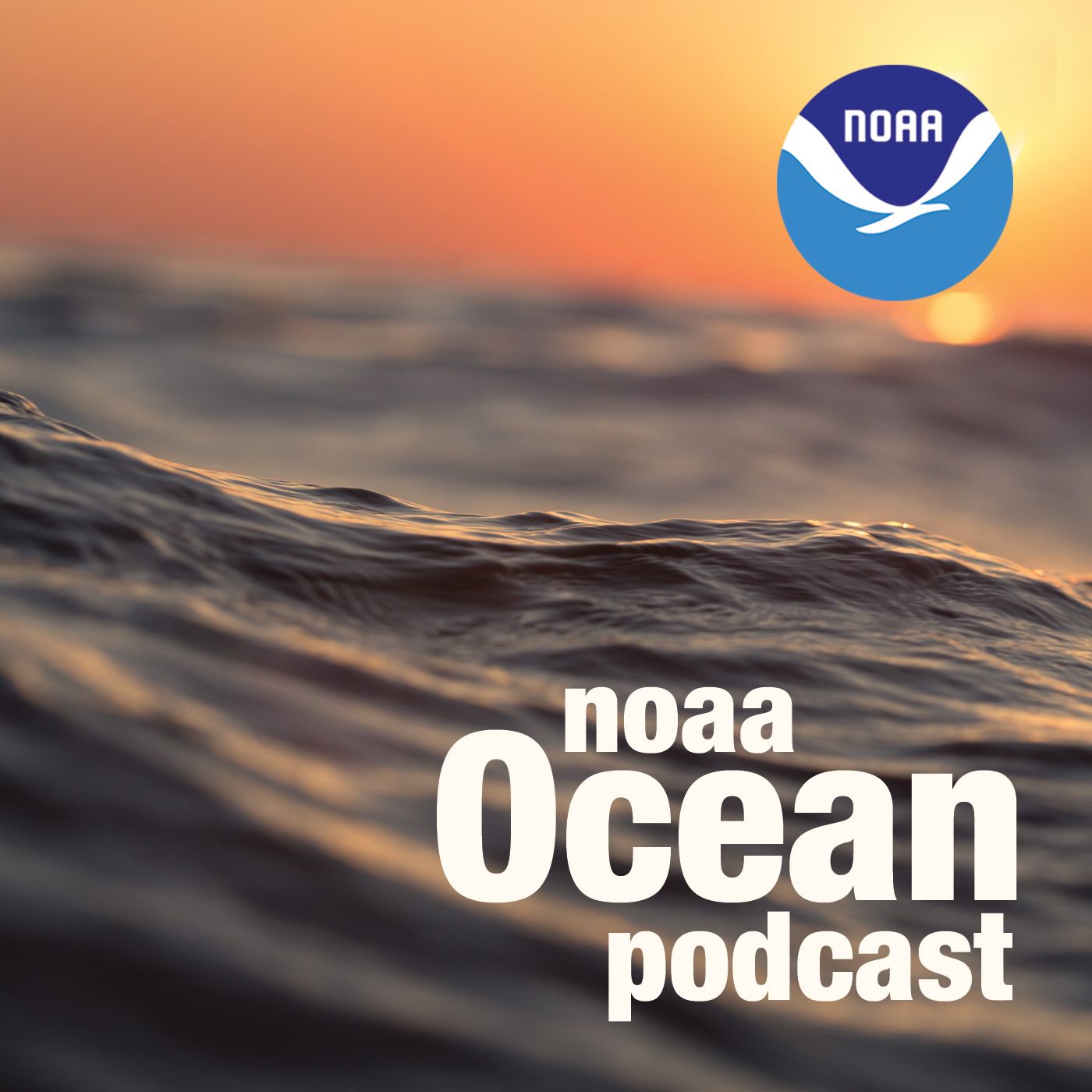Volunteering with our National Marine Sanctuaries
NOAA Ocean Podcast: Episode 04
It's time for a NOAA Ocean Podcast "Science Moment," where we sample the best segments from our past full-length podcasts. In this episode, hear about volunteering opportunities at one of our national marine sanctuary sites around the nation.

Whale of a Time
There are many volunteer activities at national marine sanctuaries around the nation. For example, the Hawaiian Islands Humpback Whale National Marine Sanctuary annually hosts the 'Sanctuary Ocean Count.' This a fun volunteer activity for residents and visitors on the islands of Oahu, Hawaii, and Kauai—and it helps to provide important population and distribution information on humpback whales around the Hawaiian Islands.
Transcript
HOST: This is the NOAA Ocean podcast. I'm Troy Kitch. And it's time for a Science Moment. In this episode, hear what you need to know about volunteering with NOAA's National Marine Sanctuaries.
Here's NOAA Ocean's Kate Nielsen talking with Tracy Hajduk, National Volunteer Coordinator for the Office of National Marine Sanctuaries.
HOST: So Tracy, are there really volunteer opportunities at all of the national marine sanctuaries?
TRACY HAJDUK: Yes, all of our national marine sanctuaries have ways that you can get involved. We definitely depend on our community members actually to help us reach our mission. Some sites have bigger volunteer programs than others, but we'll take somebody who's willing to help out at any site, and there's a lot of ways you can get involved.
We have volunteer programs where people are out doing community outreach events and really just spreading the message and letting people know what we're doing, what we're all about, and why the sanctuary is important. We have other programs that are working on beach cleanups or monitoring the beaches for seabirds and stranded marine mammals. We have a lot of volunteer programs that are checking out water quality in the area, which is really important, and trying to figure out how does the water look as it enters that sanctuary system. They're out there collecting this really valuable data for us. We have visitor centers where our volunteers are out there interacting with members of the public and school groups and so on, and even people just helping around the office is a really big help to us. We're actually a relatively small program and so our volunteers really help us expand what we're able to do on a daily basis.
HOST: Tracy, how much time do volunteers contribute to the sanctuaries?
TRACY HAJDUK: It does depend again on the volunteer program and the volunteer. At some sites, we do have volunteer programs that do require a set amount of time, maybe twice a month or a certain amount of hours per year, other sites though, depending on the position are much more flexible. So, there's always an opportunity for people to give as much time or as little time as they can. There's really a lot of ways to give and so we'll take as much time as they'll give us, but even just a little bit or once a year can really help us out too.
HOST: Do you need to have any specialized training to serve as a volunteer?
TRACY HAJDUK: Definitely not. We take volunteers who don't know anything about the ocean, but just want to get involved and we're happy to teach them everything they need to know. Some of our programs again do require a little bit more training, but we will provide that for you. And a lot of times it's just learning about the sanctuary and so on and all of our volunteer coordinators are wonderful educators themselves so they really are happy to teach people and help them along the way. And we also have a lot of our volunteers teaching each other, you really learn from the other volunteers and you'll kind of find these mentor volunteers will teach you and pull you along the way to teach you everything you need to know.
There are a few positions too that do require some additional certifications. Some of our more advanced volunteer positions, for instance, being a volunteer diver actually would require you to have certain certifications and so on so that one's a little more tricky, but again, we're always looking for help.
HOST: Tracy, how about for our listeners who don't live along the coast or even close to a national marine sanctuary, are there things that they can do to have an impact?
TRACY HAJDUK: Well Kate, there's a lot that anyone can do to have an impact. The main thing to remember is that everything that you do in your life can have an impact and does have an impact on the ocean. The water that rains down into our backyard ends up in the ocean eventually. And we really just want to make sure that we're living our life in a way that has the least impact on the ocean as possible because we really do depend on it for so much and the ocean really does impact our daily lives and so many things about our world.
So if you're not near a sanctuary, we always tell people, there's still so much you can do besides just thinking about the way that you live your life, but there's a lot of other opportunities and ways to get involved. We really encourage people to volunteer because it's such an amazing way to give back to your community and to the environment. Any town has either a park or maybe a national park or a museum or an aquarium or something like that where you can help out.
HOST: We hope you've enjoyed this Science Moment! If you liked this podcast and want to hear more search for The NOAA Ocean Podcast in your podcast player or visit oceanservice.noaa.gov.

From corals to coastal science, connect with ocean experts to explore questions about the ocean environment.
Subscribe to Feed | Subscribe in iTunes
Browse All Episodes of the NOAA Ocean podcast